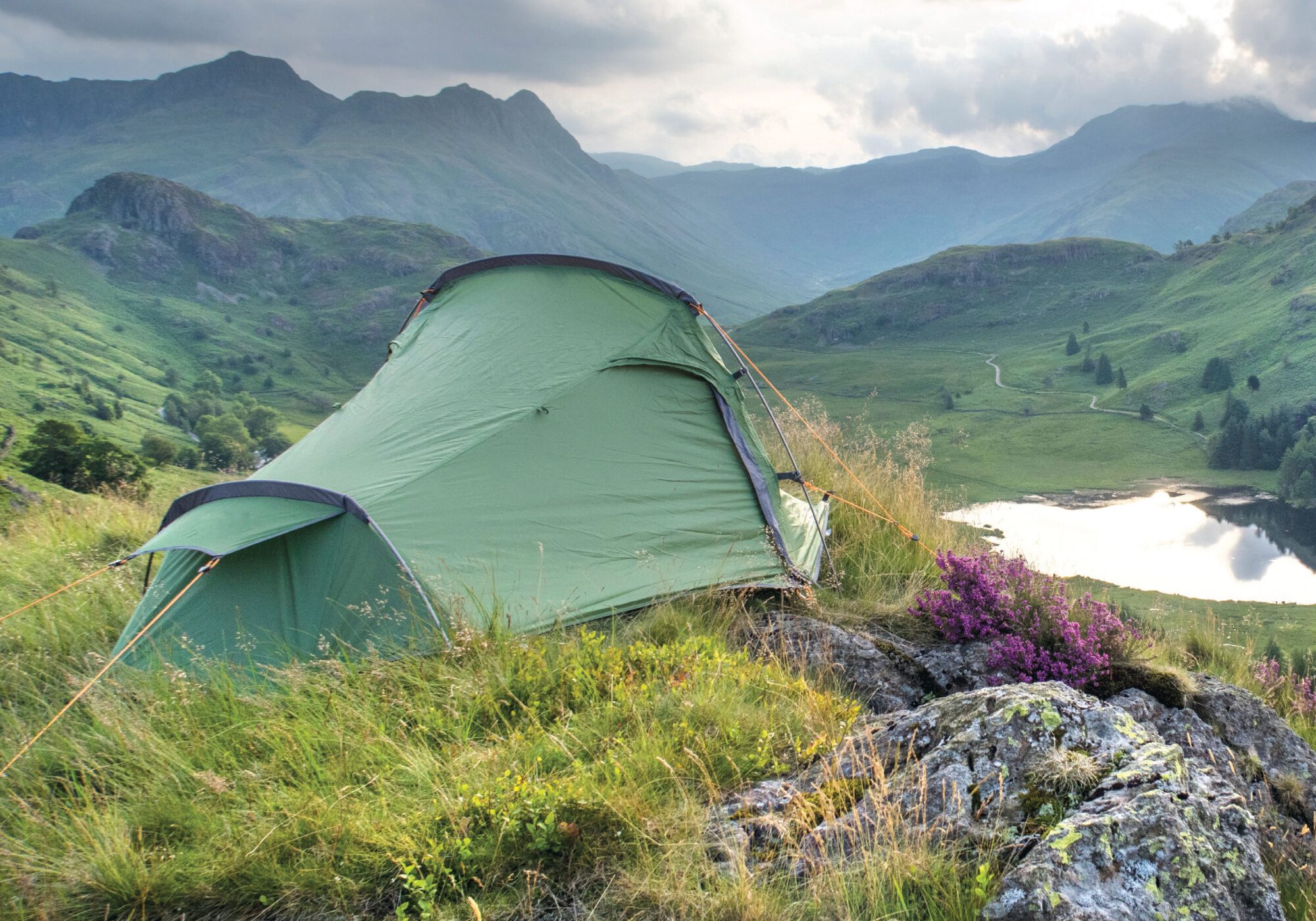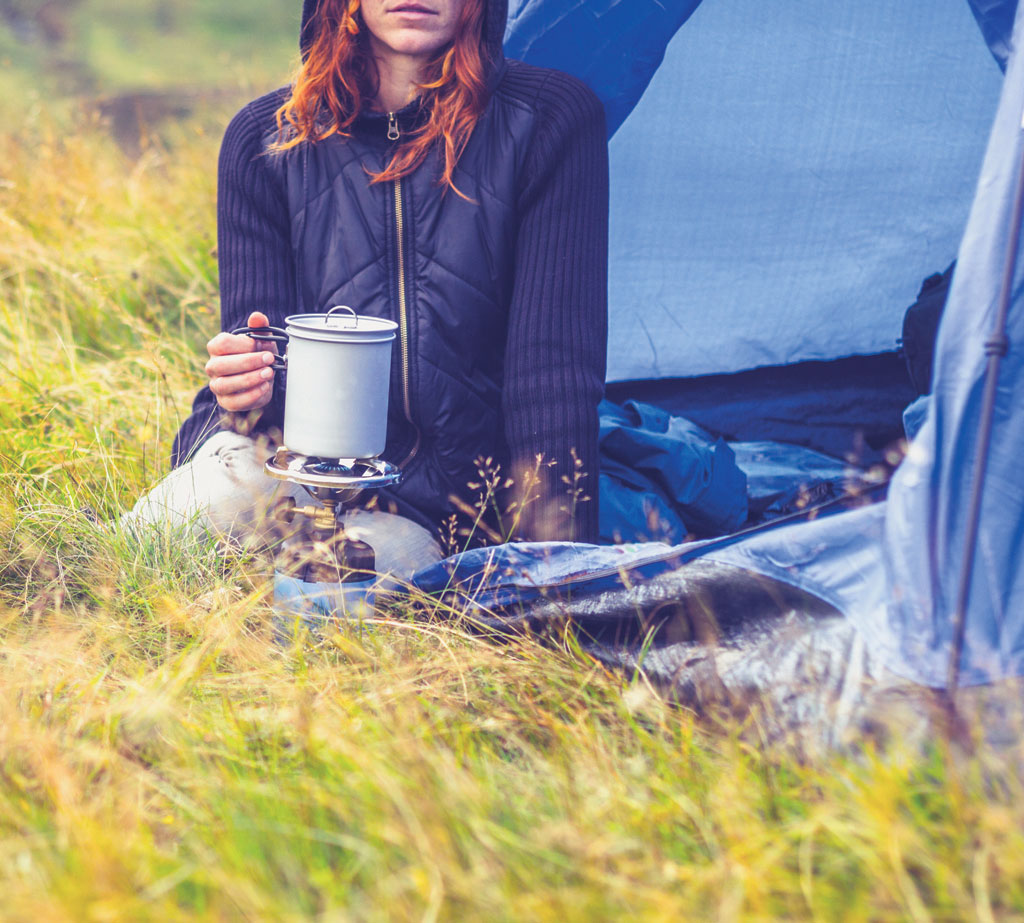
Go Wild in the Country
by Laura Storey
FANCY REWILDING YOUR LIFE? THEN, WHY NOT START WITH WILD CAMPING... HERE’S NORTHERN LIFE’S TOP TIPS FOR GOING WILD IN THE COUNTRY.
If you want to spend more time in the wilderness, camp sites are great to spend a weekend in – hot showers, toilet facilities, sometimes even a playground are all perfect to keep everyone happy and entertained, but there are times when bedding down next to Steve’s stag-do isn’t the most peaceful way to enjoy your time in the country. What wild camping lacks in toilet facilities, it more than makes up for in solitude.
Technically, wild camping is illegal in England and Wales, the easiest place to pitch your tent is Scotland, where right-to-roam laws enable you to camp almost anywhere. Loch Trool in Southern Scotland is perfect to pitch up in and not too far to drive either. A narrow, freshwater loch, it is surrounded by stunning scenery and wild walks.

In England and Wales, you will need to ask the landowners’ permission before setting up camp. Generally, farmers can be incredibly accommodating, and will often provide you with a better pitch than the one you had your eye on in the first place. Asking at the farmhouse will also ensure you’re not awoken to a herd of cows surrounding your tent. You can get yourself in trouble if you’re found camping somewhere you shouldn’t be, though mostly wild camping is tolerated, mainly because most campers take steps to blend into their environment and set up late and leave early to avoid disturbing anyone else.
Whether you’ve asked permission or not, it is bad practice to camp in large groups, leave behind litter or create noise. A well-established rule is to leave no trace, so ensure tent pegs have been collected and your rubbish is stowed in your backpack, it will still likely be lighter than when you arrived.
Aside from the law, there’s an even trickier thing you’ll face when camping in the wild. Doing your business in the bushes is a rite of passage for any backpacker and few of us get through it unscathed. If you’ve got to go, you’ve got to go, and if you’re travelling for more than a day, it’s going to happen. Get away from rivers and streams and dig a hole. Finish by covering the hole with dirt. Toilet roll is recommended (you will need to put the paper in a ziplock bag to dispose of at home) – the hardiest camper will swear by leaves, just make sure you know what you’re grabbing, nettles are not ideal.
Feel the sun on your skin, hear the birds in the trees and, at times, feel your heart pump in your chest.
Wild camping lends itself to remote locations cars can’t always reach, so you’ll need to carry your kit on your back. Novices often buy more equipment than they need, and regret it when they’re lugging it all up a hill. A lightweight tent and cosy sleeping bag are among the essentials, as is a supply of bottled water. If you are determined to recreate Bear Grylls and plan to find your own water sources, it is still recommended you carry water for emergencies and you should also make sure there is running water nearby to your camp. Always boil water before drinking, you can also buy purification tablets or filters, the LifeStraw filter is a favourite. You should always tell someone where you are going, and when you expect to be back, even if you’re going with another person. A sprained ankle away from paths could be deadly if people don’t know where you are.
Once you’re out in the wilderness, there’s plenty of ways to turn your walk in the woods into an adventure. For many of us as children, the forest was our own adventure playground where we swung like Tarzen on rope swings tied dangerously onto mushroomed trees, it was our zoo where we observed creepy crawlies and imagined dog prints were lions roaming between the trees, and it was our safe place, hiding out in dens crafted from branches or, if we were lucky, a thin sheet of plastic, cosy and warm despite the northern weather.

The popularity of bushcraft has meant all of these activities – den-making, tracking and even tree climbing has become a perfectly acceptable activity for adults, as long as you pick a tree which can take your weight. Make sure the branches are strong and the tree is healthy, any dead branches are likely to snap, leaving you covered in mud and mulch on the forest floor. Bring a flask and find a comfy spot, the birds will forget about your presence and allow you to observe them flitting from tree to tree.
Rewilding your life allows you to connect once again with nature, to feel the sun on your skin, hear the birds in the trees and, at times, feel your heart pump in your chest. From foraging to wild swimming to sleeping under the stars, taking a walk on the wild side can not only help you get fit, it provides small moments of wonder with every step.
Northern Life Mar/Apr 2022




